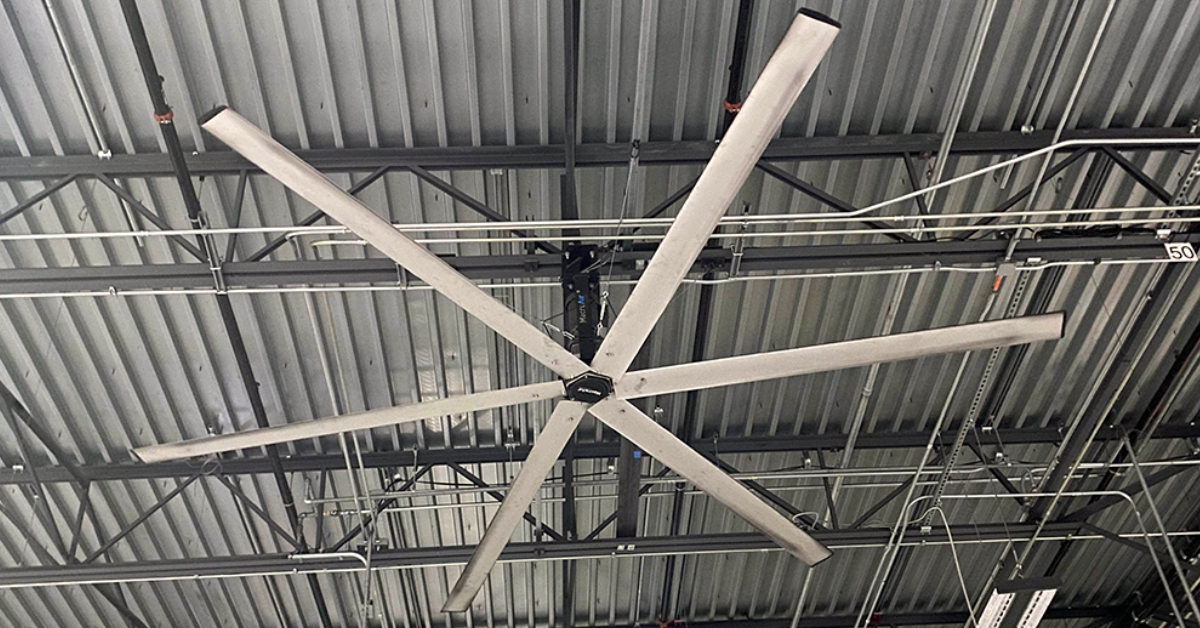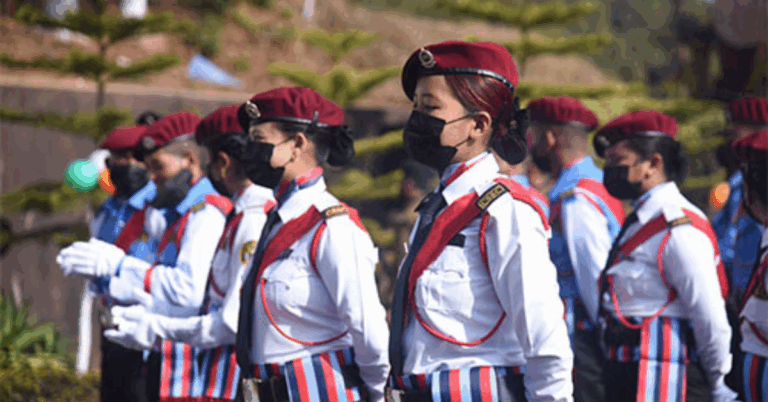Choosing the Right Partner: HVLS Fan Supplier in Singapore
In the hot and humid climate of Singapore, proper air circulation isn’t just a comfort feature — it’s a necessity. Many large warehouses, factories, commercial halls, and even modern retail environments turn to high-volume, low-speed (HVLS) fans as an energy-efficient solution to regulate airflow and maintain thermal comfort. That’s why selecting a reputable HVLS Fan Supplier In Singapore is critical for businesses aiming to combine performance, durability, and cost-effectiveness in their ventilation systems.
What Are HVLS Fans, and Why They Matter
HVLS fans are large diameter ceiling fans (often 2–7 m in span) that move a considerable volume of air at low rotational speeds. Unlike conventional fans that rely on fast spinning blades, HVLS fans create a gently sweeping airflow that displaces heat and humidity across large spaces, enhancing comfort and reducing reliance on conditioning systems.
Key advantages include:
-
Energy efficiency: Because they move air gently but broadly, HVAC systems can raise set temperatures (e.g. from 22 °C to 26 °C) while maintaining perceived comfort.
-
Uniform air mixing: They reduce stratification, drawing cooler air down and dispersing warmer air upward.
-
Low maintenance: With robust construction and good design, they tend to have long service lives.
-
Scalability: They are ideal for large industrial, agricultural, or commercial spaces where multiple smaller fans would be less efficient.
Given the climate and architectural demands in Singapore, the right HVLS fan supplier can make or break a project’s success.
Why Your Choice of HVLS Fan Supplier in Singapore Is Critical
Given that HVLS fans are a long-term investment, the supplier is more than just a vendor — they are your partner in design, installation, maintenance, and performance assurance. Some key considerations in choosing a supplier include:
-
Technical expertise and customization
An ideal supplier should offer custom sizing, blade profiles, and control systems tailored to your space and environmental challenges (e.g. high humidity or outdoor exposure). Off-the-shelf solutions may not optimize performance in demanding settings. -
Quality, safety, and testing
The best firms run extensive analyses (e.g. finite element method, dynamic strain measurement, lab testing) to ensure fatigue resistance, vibration stability, and structural integrity under wind loads. -
Warranty, servicing, and support
Having local servicing capabilities and warranty support is crucial. Singapore’s tropical environment can stress mechanical systems, so swift maintenance is necessary. -
Energy savings and ROI validation
A reliable supplier should provide models of energy consumption, expected savings, and payback projections to justify capital expenditure. -
Regulatory compliance and certifications
Ensuring that fans meet safety standards (electrical, mechanical, fire code) and local guidelines is nonnegotiable. -
Reputation and track record
Reviewing past installations in Singapore or Southeast Asia helps validate a supplier’s real-world performance and reliability.
Spotlight: What a Leading Supplier Brings to the Table
Let’s explore what one top-tier supplier in Singapore is doing, as an illustrative model of best practices. This supplier’s product line is designed to address industrial, commercial, and even zootechnical (agricultural) applications — demonstrating versatility in application.
1. Range of Series and Sizes
They offer multiple series — including a WF Series for general commercial/industrial use, and a WZ Series intended for larger, heavier demand settings (including agricultural installations). These fans cover broad diameter ranges, from roughly 2.5 m to 7 m, allowing for flexible deployment across varying ceiling heights and spatial footprints.
2. Advanced Motor and Control Technology
Their fans use brushless motors with integrated inverter control (sometimes described as “Motoinverter” technology). Benefits include:
-
Quiet operation
-
Low energy draw (comparable to a lighting load in some cases)
-
Precise speed control and monitoring through a user interface
-
Longevity by eliminating brushes and leveraging direct drive mechanisms
3. Fatigue Resistance and Safety Engineering
To ensure safety and lifespan, they conduct:
-
Finite Element Modeling (FEM) to analyze structural stresses
-
Dynamic telemetry measurements to monitor vibration and strain in real time
-
Lab testing under simulated wind gusts and mechanical loads
Their mechanical design features include:
-
Double screws on the motor shaft for better clamping and stability
-
Conical shafts that provide frictional resistance in addition to mechanical engagement
-
Anti-falling plates (safety plates) preventing blade or rotor components from detaching
These measures show commitment to minimizing structural risk in tropical (and sometimes cyclone-prone) conditions.
4. Integrated Design and Customization
Rather than offering a single “one-size fits all” model, the supplier supports:
-
Custom blade lengths and airfoil profiles
-
Tailored control cabinets or interface systems
-
Material treatments adapted to corrosive or humid settings
This flexibility is key for projects with nonstandard ceiling shapes, mixed usage zones, or exposure to salt air (e.g. near the coast).
5. Local Presence and Support
Having a base of operations in Singapore ensures faster lead times, parts availability, and responsive maintenance. This is especially important in a humid and heavily regulated environment like Singapore, where downtime affects operations and worker comfort.
Applications Across Sectors
Let’s see how different sectors in Singapore can benefit from HVLS fans, and what to watch out for:
| Sector | Use Case | Benefits | Considerations |
|---|---|---|---|
| Warehouses / Logistics Hubs | High ceilings, large areas | Improved worker comfort, lower cooling loads, reduced waste from moisture | Must be durable under daily operation, strong mounting infrastructure |
| Factories / Manufacturing | Heat from equipment | Even temperature, worker safety, lower energy | Integration with existing HVAC/ventilation systems |
| Retail & Showrooms | High ceilings, customer zones | Comfort at lower AC cost | Aesthetic integration, noise levels |
| Agriculture / Animal Housing | Barns, poultry houses | Better airflow, disease control, heat stress mitigation | Corrosive environments, robustness under bio-conditions |
| Event Halls / Sports Arenas | Large open indoor spaces | Improved air circulation, spectator comfort | Airflow modeling for occupancy patterns, zoning control |
Each sector places different demands on fan performance, control zoning, and maintenance cycles — so a flexible supplier is key.
Choosing the Right Supplier — A Checklist
When evaluating potential HVLS fan suppliers in Singapore, consider:
-
Technical Proposal & CFD Modeling
Ask for computational fluid dynamics (CFD) or airflow simulation to justify fan placement, speed settings, and coverage. -
Product Specifications & Certification
Review datasheets for motor efficiency, blade material, ingress protection (IP) ratings, and structural safety factors. -
Warranty & After-Sales Support
Does the supplier provide on-site service, local spares, and scheduled maintenance? What is warranty coverage for mechanical and electrical components? -
Track Record & References
Visit existing installations or ask for client testimonials from similar projects in Singapore or Southeast Asia. -
Total Cost of Ownership (TCO) Analysis
Don’t just look at upfront cost. Evaluate energy savings, downtime avoidance, maintenance expenditure, and potential tax incentives or rebates. -
Installation & Integration Capability
The supplier should coordinate with your structural, electrical, and architectural teams to ensure smooth installation (mounting, cabling, control integration). -
Scalable Upgrades & Controls
Ask whether the system can interface with building management systems (BMS) or accept future expansions.
Overcoming Challenges in Singapore’s Environment
Suppliers and clients must account for local challenges including:
-
High humidity and corrosion: Use corrosion-resistant materials and coatings.
-
Wind loads and building sway: Structural attachments must accommodate building motion.
-
Acoustic constraints: Singapore has strict noise regulations; fans must operate below permissible thresholds.
-
Tight ceiling heights or obstructions: Blades and motors must be compact or modular to fit in constrained spaces.
-
Integration with HVAC and airflow systems: Avoid interference and ensure systems complement rather than conflict.
A well-chosen supplier will already have design strategies to mitigate these challenges.
How to Engage the Right Supplier
-
Define the Project Scope
Layout drawings, ceiling dimensions, target air speeds, and budget constraints help the supplier propose viable options. -
Invitation to Tender / Request for Proposal (RFP)
Include performance criteria, warranties, maintenance expectations, and installation responsibilities. -
Evaluate Proposals (Technical & Commercial)
Prioritize suppliers who justify their designs and provide substantiated ROI calculations. -
Site Visit & Pre-Installation Inspection
The supplier should survey structural adequacy, mounting points, and electrical logistics beforehand. -
Installation, Commissioning & Training
After physical installation, calibration, testing, and user training are essential. The supplier should supervise and certify the operation. -
Ongoing Monitoring & Maintenance
Regular checkups, blade balancing, motor inspections, and firmware/software updates ensure long-term performance.
Conclusion
Selecting a competent HVLS fan supplier in Singapore is more than a matter of picking a product — it’s enlisting a partner for years of system performance, reliability, and energy savings. Singapore’s climatic demands and stringent building standards call for suppliers with technical sophistication, rigorous testing, customization capability, and local support.
By evaluating proposals carefully, insisting on simulation and performance guarantees, and planning for long-term maintenance, you can ensure that your investment in HVLS fans will pay dividends in occupant comfort, lower energy consumption, and reduced operational risks. Make the supplier choice wisely — it’s foundational to the success of your ventilation project.







